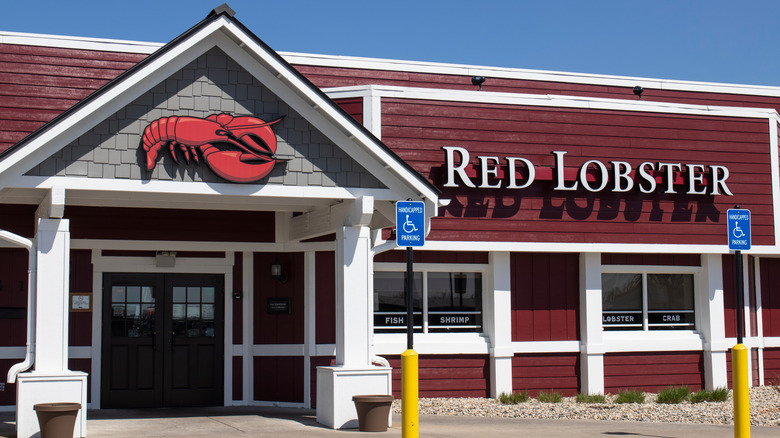Red Lobster Suddenly Closed Dozens Of Locations. Is This The End?
The downstream effects of years of high inflation are beginning to rear their ugly head and Red Lobster could be going down with the ship. Surprising only those of us who haven't been paying attention, Red Lobster has announced the sudden closure of at least 48 different locations nationwide – one of the largest mass closures in the company's history — alongside news that the closed restaurants' equipment will be liquidated and auctioned off. California and Florida are getting hit the worst, with the loss of five locations each. Its website claims over 700 locations across the globe, which means a jaw-dropping 7% of the company's locations are vanishing overnight.
But the worst may be yet to come. In 2020, Thailand-based seafood distributor Thai Union purchased a controlling share in Red Lobster, effectively becoming the owner of the company. A series of bad decisions — which we'll get into in a second — has compounded the financial strain all restaurant chains have been facing in this economy, leading to several years of significant losses for Red Lobster. Thai Union has announced its plans to divest from the company at an expected loss of $530 million.
It was only last month that Red Lobster was reportedly considering filing for Chapter 11 bankruptcy thanks to a mountain of debt that seems only to be growing. Consistent lack of profitability, rising debts, key shareholders divesting from the company, and sudden mass closures aren't typical metrics of a healthy business that has plenty of people speculating if Red Lobster's days are numbered.
Why is Red Lobster closing its restaurants?
As with any business, if money starts to dry up, there isn't enough to go around. Restaurants cost money. There's the cost of labor, the cost of food, and the cost of leasing the building — all of which have seen a stark increase in recent years. The more money that's needed to run a business, the more money that business needs to make to turn a profit. If these locations are ending the year at a net loss, closing them down can help the company's bottom line, as in their net income (all of their revenue minus their expenses).
One major tipping point for Red Lobster was its addition of all-you-can-eat shrimp to the menu in June 2023. All-you-can-eat shrimp has been an annual event Red Lobster has put on for years now, but it was a limited-time offer. Now, for $20 you can sit in the restaurant for as long as you like, whenever you like, and eat as much shrimp as you like. The idea was to increase its traffic, which did work. A lot more people were coming in. The problem is that it also increased its food costs. So much so that the cost of the shrimp erased all the profits it gained from having more bodies at the table. It's the kind of mistake business students study to learn what not to do. Although other casual dining chains are also struggling, Red Lobster seems to be having more challenges than most.

